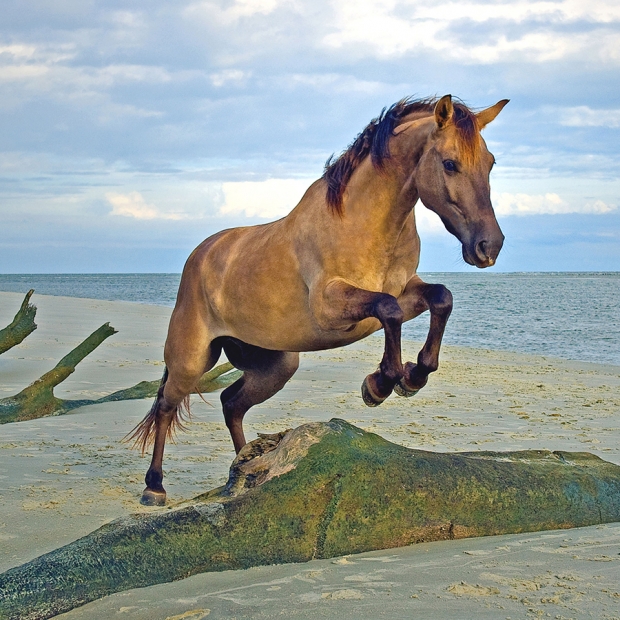
This tough, smallish horse was tapped as the South Carolina Heritage Horse in 2010 by then Gov. Mark Sanford, and boasts a history dating back to the 1500s. A rare breed native to the state, the Tacky descended from horses brought by Spanish explorers and survived by foraging on marsh grass along the coast and sea islands.
- According to the S.C. Historical Society, the Tacky was lauded by naturalist James John Audubon, and author Dubose Heyward. In 1864, Audubon wrote the horses are “tough as a pine knot” due to their ability to adapt to new situations and not spook easily. Heyward, perhaps best known for penning “Porgy” in 1925, loved the Lowcountry of South Carolina, and wrote a poem, Marsh Tackies, in honor of the breed.
- The wild horses were domesticated by Native Americans, then later used by European settlers and enslaved Africans. Hardy, gentle, and moving in a four-beat, ambling gait deemed the Swamp Fox Trot, it measures between 13 and 15 hands high.
- Their size and agility has made them beloved horses for the past 500 years, and they used to be a common sight in the fields of the Lowcountry. The horse was largely managed in lowcountry islands until recently, when cars and tractors began replacing the marsh tacky as a mode of transportation.
- The Tacky was particularly helpful in South Carolina during the Revolutionary War. Francis Marion and his men, who employed guerrilla warfare, rode them in the swamps, where these sturdy horses were right at home. The British, however, had brought larger and taller European horses unaccustomed to South Carolina’s heat and terrain. Those horses got mired down in the mud.